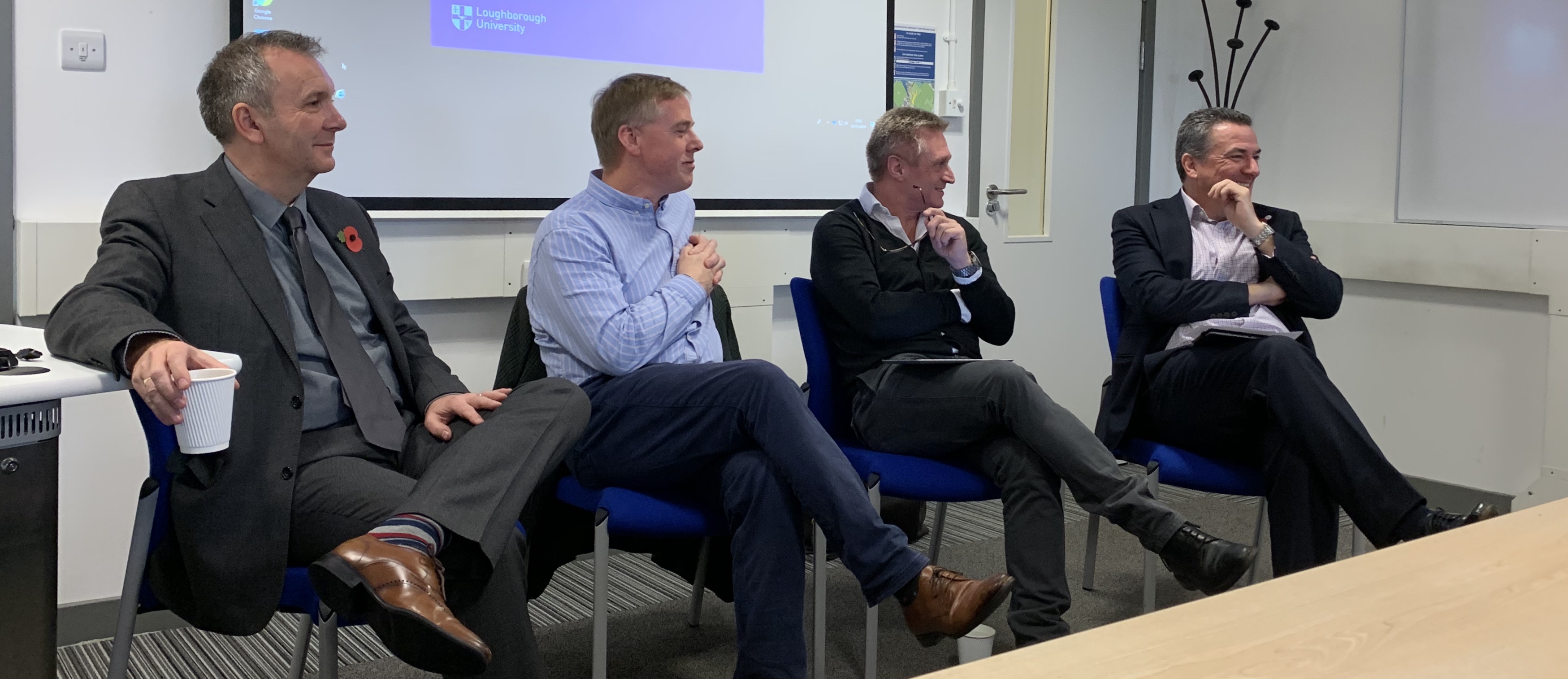
Along with Richard, the other panellists were David Cutter, CEO, Skipton Building Society; David Marlow, CEO of Nottingham Building Society; and Colin Fyfe, CEO of Hinkley & Rugby Building Society. The debate has chaired by Raj Bains, Head of Operations from Dudley Building Society. For the purposes of this blog, individual comments have not been attributed.
The audience for the event was primarily made up of alumni from the MSc in Strategic Leadership course that is delivered by Loughborough University, having been developed in partnership with the Building Societies Association and Association of Financial Mutuals.
Much of the debate focused on the challenges and opportunities facing building societies in their core markets of mortgages and savings.
A number of threats were outlined by the panel. For example, in the mortgage market, structural changes in retail banking following the ring-fencing exercise has changed dynamics of this market. The large retail banks now significant funds they can lend at low cost via retail mortgages. Building societies have to balance their lending activities against the rates they pay on deposits, which makes life more challenging. There is also a steady stream of new challenger banks coming to market actively pursuing lending categories. The barriers for entry are lower today, but the exit barriers are also lower if these new entrants are not successful.
In savings, the way customers deal with building societies is also changing. Today’s customers are largely satisfied with the service and proposition of the building societies, but there are future question marks around sustainability in respect of the way the retail savings proposition is delivered. There is a strategic challenge around the balance of meeting the demands of today’s savers vs the generation currently coming though as millennials, who have different expectations and channel preferences.
There are also a number of other challenges facing building societies, including: the rising tide of regulation and the associated overhead impact at a time when there are many new pressures on costs and investments; increasing competition with medium-sized building societies concentrating on lending in specialist and niche markets; and significant digital and data innovation taking place in the value chain in the mortgage and savings markets; a potential oversupply of mortgage lenders; operational resilience is an increasing area of focus linked to the continually evolving challenge of cybersecurity.
It was highlighted that there are changes in consumer behaviour due to technology disruption, customer experience from other sectors and changing expenditure habits resulting from a low interest rate environment – all of which are driving change. Low interest rates also mean societies earn less on their reserves. This means banks get lower return on their capital, which means their lending can be cheaper but forces pressure on their costs.
The sector has common problems, so collaboration and discussion between societies is important and hugely valuable, although it was recognised that it is challenging to align some forms of collaborative action in practice. So, there has been a tendency for this to be hard to deliver unless there is a burning platform facing the whole sector.
There was discussion about how FinTechs have evolved over the last 4-5 years as they mature, with many finding a B2C model hard to sustain and moving to a B2B, partnership and supply approach, with a greater emphasis on collaboration. It’s no longer the differentiator, or threat, that it was, as many established organisations have developed their own capability and the partnerships they have established.
When considering technology developments, building societies, should be honest about what the organisation can do well itself, compared to what would be better done by an external partner.
Thinking about which bets to place in the future and how to “back the right horse” the panel shared views about strategy planning and understanding strategic risks. It was recognised that societies can’t be all things to all people, and they benefit from understanding where and how the competitive advantage and value that they have is derived from.
Consulting firm LEK recently identified five strategy options available to building societies:
- Niche markets
- Regional strategy
- Customer centric strategy
- Large scale diversified group
- Challenger to banks
Determining which of these, or potentially hybrids, or others, may be a helpful way to think about focus and value.
And when developing strategic options, taking a test and learn approach helps to manage risks and performance, something societies can do quite quickly and relatively safely; rather than ‘betting the farm’ on major shifts. So, experiment but make sure this is done with full awareness of the risks involved and also only to be done in an instance where one can financially afford for the experiment to fail.
The important thing for building societies is to keep focusing on what is relevant to them and their members, rather than where the noise might be in the market and how they can remain relevant, competitive and sustainable in a changing market with multiple threats…but also some opportunities.